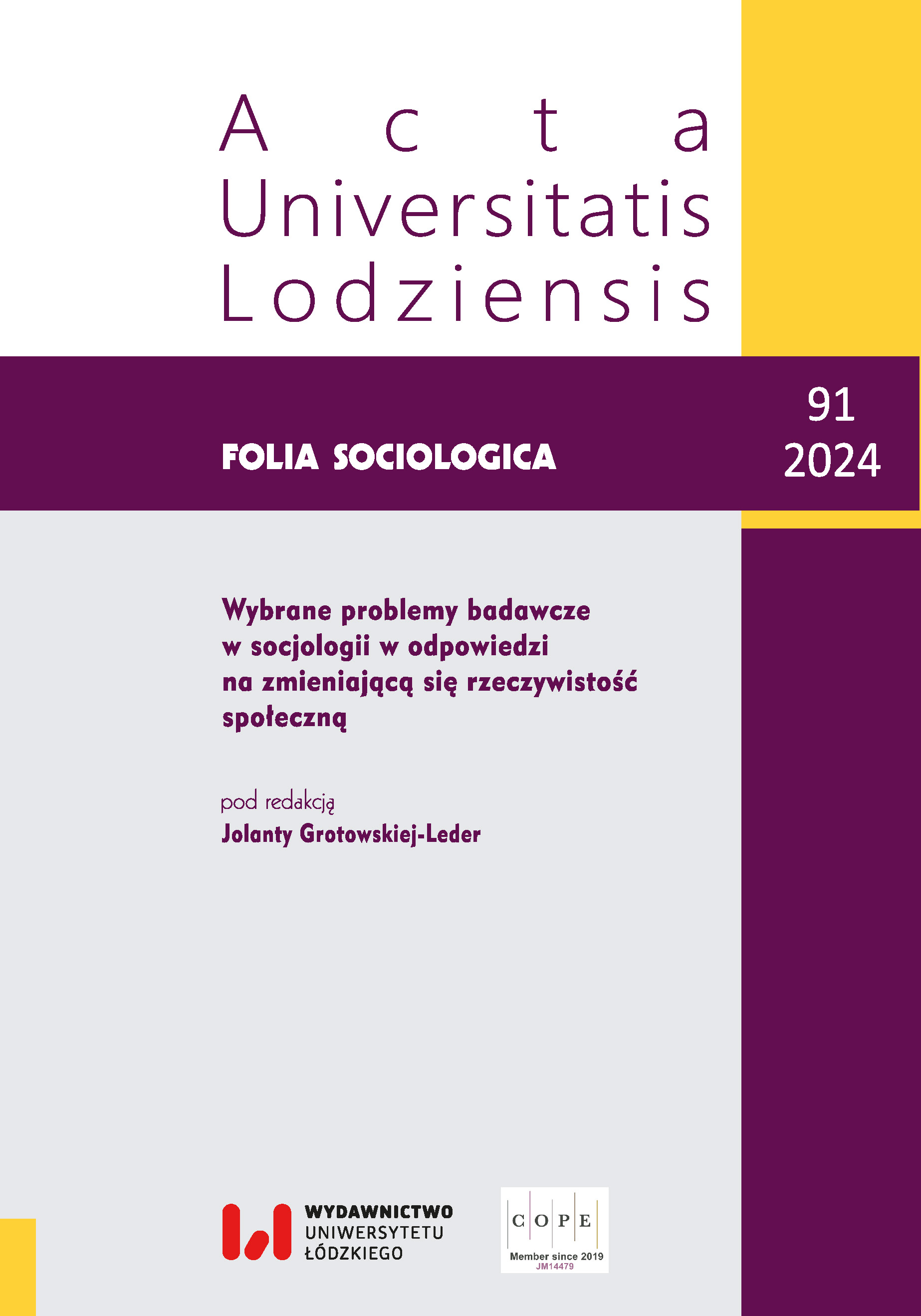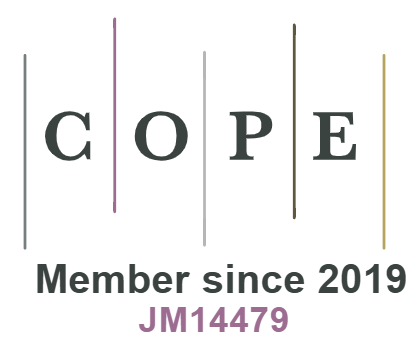Cryptocurrency users in Poland – selected characteristics
DOI:
https://doi.org/10.18778/0208-600X.91.03Keywords:
cryptocurrency, technology, blockchain, profile, crypto-usersAbstract
The article attempts to characterize cryptocurrency users in Poland. The characteristics include the level of trust in cryptocurrencies of their users, purchase motivations, attitude towards state institutions and selected socio-demographic characteristics. The empirical basis for the analyses is quantitative research conducted using the CAWI technique among crypto-users. It was established that the average crypto-user is a young, well-educated man, living in a large city, earning at least the national average, seeing significant potential in crypto-currencies, for whom the purchase is an investment. Crypto-users are interested in politics and participate in elections. The literature part of the discussion reviews the literature on the subject, indicating crypto-users as a new socio-economic phenomenon, presenting their essence and basic features. Part three of the publication presents the methodological assumptions of the work, part four the results, and the summary of the work is a traditional ending. An integral element of the study is the bibliography.
References
Bashir I. (2019), Blockchain – Zaawansowane zastosowanie łańcucha bloków, T. Walczak (tłum.), wydanie 2, Wydawnictwo „Helion”, Gliwice.
Google Scholar
Bethlehem J. (2010), Selection bias in web surveys, „International Statistical Review”, t. 78, nr 2, s. 161–188.
Google Scholar
DOI: https://doi.org/10.1111/j.1751-5823.2010.00112.x
Grzybowski M., Bentyn S. (2018), Kryptowaluty: dlaczego jeden bitcoin wart będzie milion dolarów?, Publishing house: Crypto-logic Sp. z o.o., Poznań.
Google Scholar
GUS. (2022), Komunikat Prezesa Głównego Urzędu Statystycznego z dnia 9 lutego 2022 roku w sprawie przeciętnego wynagrodzenia w gospodarce narodowej w 2021 roku, https://stat.gov.pl/sygnalne/komunikaty-i-obwieszczenia/lista-komunikatow-i-obwieszczen/komunikat-w-sprawie-przecietnego-wynagrodzenia-w-gospodarce-narodowej-w-2021-roku,273,9.html [dostęp: 16.07.2024].
Google Scholar
Heiervang E., Goodman R. (2011), Advantages and limitations of web-based surveys: evidence from a child mental health survey, „Social psychiatry and psychiatric epidemiology”, t. 46, nr 1, s. 69–76.
Google Scholar
DOI: https://doi.org/10.1007/s00127-009-0171-9
Hughes E. (1993), A Cypherpunk’s Manifesto, https://www.activism.net/cypherpunk/manifesto.html [dostęp: 13.07.2024].
Google Scholar
Johnson J.L., Manion S. (2019), Blockchain in healthcare, research, and scientific publishing, „Medical Writing”, t. 28, s. 10–13.
Google Scholar
Lutyńska K. (1990), Społeczne uwarunkowania odpowiedzi typu „trudno powiedzieć” w badaniach sondażowych las siedemdziesiątych, „Kultura i Społeczeństwo”, t. 34, nr 1, s. 175–183.
Google Scholar
May T.C. (1992), The Crypto Anarchist Manifesto, https://www.activism.net/cypherpunk/crypto-anarchy.html [dostęp: 29.04.2020].
Google Scholar
Mincewicz W. (2021), Social sciences to the rise and development of cryptocurrencies: an analysis of the notion, „Przegląd Politologiczny”, t. 3, s. 93–104.
Google Scholar
DOI: https://doi.org/10.14746/pp.2021.26.3.7
Mincewicz W. (2022), The potential of using blockchain technology in human life: examples of implementation, „Online Journal Modelling the New Europe”, t. 40, s. 78–97.
Google Scholar
DOI: https://doi.org/10.24193/OJMNE.2022.40.04
Mincewicz W. (2023a), Polityka państw wobec powstania i rozwoju krytpwoalut: analiza empiryczna. Praca doktorska przygotowana pod kierunkiem naukowym dr hab. Daniela Midera na Wydziale Nauk Politycznych i Studiów Międzynarodowych Uniwersytetu Warszawskiego.
Google Scholar
Mincewicz W. (2023b), Technologia blockchain jako narzędzie wspomagające głosowanie: wykorzystanie w wyborach ogólnokrajowych i lokalnych, „Przegląd Sejmowy”, t. 5, nr 178, s. 139–157.
Google Scholar
DOI: https://doi.org/10.31268/PS.2023.211
Nakamoto S. (2008), Bitcoin: A peer-to-peer Electronic Cash System, https://bitcoin.org/bitcoin.pdf [dostęp: 14.07.2024].
Google Scholar
Pack M.E. (2012), The Crypto Anarchists’ answer to Cash, „IEEE Spectrum”, t. 49, nr 6, s. 50–56.
Google Scholar
DOI: https://doi.org/10.1109/MSPEC.2012.6203968
Rozporządzenie 2023/1114 w sprawie rynków kryptoaktywów oraz zmiany rozporządzeń (UE) nr 1093/2010 i (UE) nr 1095/2010 oraz dyrektyw 2013/36/UE i (UE) 2019/1937.
Google Scholar
Siuda P. (2016), Ankieta internetowa: zalety i wady – rekapitulacja, [w:] Siuda P. (red.), Metody badań online, s. 28–81, Wydawnictwo Naukowe „Katedra”, Gdańsk.
Google Scholar
Szpringer W. (2019), Blockchain jako innowacja systemowa. Od internetu informacji do internetu wartości, Wydawnictwo Poltext, Warszawa.
Google Scholar
Szpuner M. (2012), Nowe-stare medium: Internet między tworzeniem nowych modeli komunikacyjnych a reprodukowaniem schematów komunikowania masowego, Wydawnictwo IFiS PAN, Warszawa.
Google Scholar
Szwalbe S. (1996), Analiza odpowiedzi ucieczkowych, [w:] Krzemiński I. (red.), Czy Polacy są antysemitami, s. 248–268, Oficyna Naukowa, Warszawa.
Google Scholar
Włosik K. (2021), Rynek kryptowalut i tokenów z perspektywy inwestycyjnej, Wydawnictwo Uniwersytetu Ekonomicznego, Poznań.
Google Scholar
DOI: https://doi.org/10.18559/978-83-8211-081-4
Downloads
Published
Versions
- 2024-11-10 (2)
- 2024-11-10 (1)
How to Cite
Issue
Section
License

This work is licensed under a Creative Commons Attribution-NonCommercial-NoDerivatives 4.0 International License.










